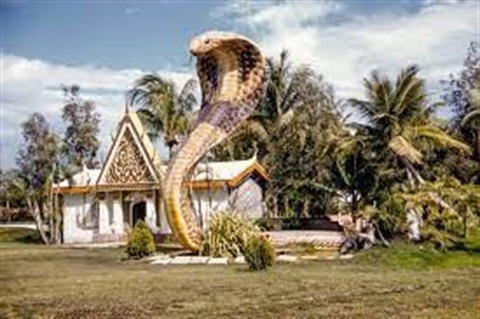The Miami Serpentarium

by Dan Millott
Right after World War II, South Dade County east of US 1 was a quiet area where mango and avocado trees reigned. It was here that Bill Haast decided to set up a facility to study the redeeming powers of poisonous snake venom.
Haast opened the Miami Serpentarium just north of Southwest 128th Street in 1947. Longtime residents remember the huge cobra head towering over the entrance on Dixie Highway. Today, a Chase Bank and shopping center occupy the land, with Pinecrest Village Hall close by.
When it was open, the Miami Serpentarium was a notable Florida attraction, a unique place where visitors could get close to snakes, lizards and other reptiles, including alligators. Haast put on dramatic shows, demonstrating how to extract venom from the fangs of cobras and other poisonous reptiles. But in 1984 tragedy struck when a child somehow got into the alligator pit and was killed by the reptile. The accident prompted Haast to close the facility in the fall of that year.
The attraction part of Serpentarium, however, was just a sidebar to Haast's goal. He wanted it primarily to draw attention to his life's pursuit of venom medical research. In fact, for a period of time, the University of Miami had high interest in Haast's research on the use of venom to cure polio, and had some positive results using monkeys - a project shelved only after the Salk and Sabin vaccines were perfected in 1954. Haast later researched the use of snake venom for multiple sclerosis, but that effort was also abandoned.
After closing down the Miami operation, Haast and his wife Nancy moved to Salt Lake City and continued his research at the University of Utah. In 1990 they returned to Florida, setting up their research-only operation in Punta Gorda. As for the giant Cobra head, when the Serpentarium closed, the South Miami High "Cobras" moved it to their school on Southwest 53rd Street. It remained there until it was destroyed by Hurricane Andrew in 1992.
Haast himself died in 2011 at the age of 100. He attributed his longevity in part to scores of snake bites - so many that he became immune to their poisons. Right to the end he remained convinced that snake venom could bring good to the world.
"Bill dedicated his life to venom production for venom research and recognized the Value," says Nancy, who hopes to set up a place of honor for Bill's legacy. "He was a pioneer in that."